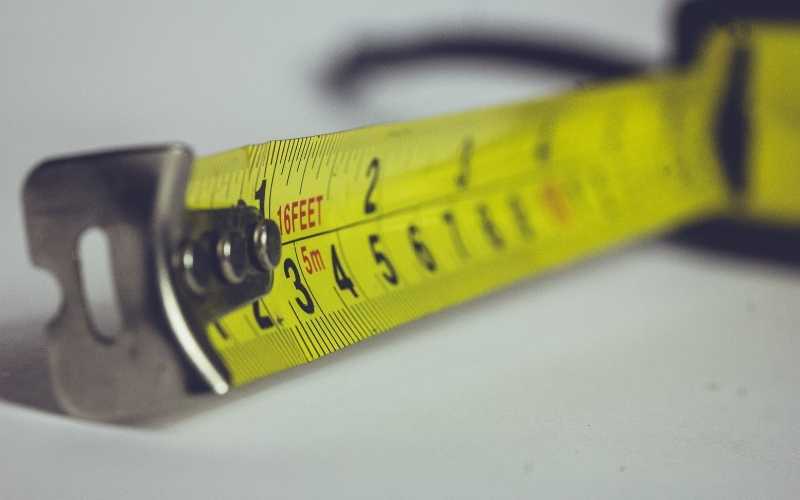Right from the beginning, man has always tried to find ways to measure things. From measuring time with the aid of the sun and shadows, to measuring distance or length with the aid of the arms, fingers and feet, man has always sought to measure things.
Fast forward to the present day, we no longer use the sun, shadows, arms and feet to measure things. There are many measuring tools or instruments available today for taking measurement of several physical quantities necessary for quality construction and craftsmanship.
Measuring tools are very essential components of every craftsman’s toolbox, because without measurement, every construction project will come out skewed and full of errors.
Even ordinary human activities requires measurements of some sort.
For instance, before you left your home this morning, you checked the time. Your wristwatch or wall clock is a measuring instrument, because it allows you to measure time.
You use your electricity meter to check your home power usage, and when you go out of the house for travel and camping, you use a compass and a map to find directions to your destination. These are all measuring tools we use in our day to day life.
Craftsmen such as woodworkers, metalworkers, engineers, technicians and even chefs use even more measuring tools, because they need to measure several physical quantities such as length, mass, geometric angles and time in order to carry out projects to the greatest amount of precision and accuracy possible.
If you want to build a house, you need several measuring tools to transfer the blueprint of the house from paper to land, or whatever surface you which to build it on.
Here in this article, we’re going to list some of the most useful and important measuring tools you can use to carry out your projects.
Table of Contents
Tape Measure

How do you measure size, distance or length? By means of a tape measure. Craftsmen like architects, engineers, woodworkers, carpenters and even tailors use tape measures all the time to measure and determine the size of the materials they’re working with.
There are mainly two types of tape measures you can use for your work, which are spring return pocket tape measures and long tape measures.
The spring return pocket tape measure is the most common type and can usually fit into pockets. From the name, the tape usually returns into the case by means of a spring mechanism. Pocket tape measures are usually up to 15 ft in length.
On the other hand the long tape measures comes enclosed in larger cases which cannot fit into your pocket. They come in lengths of 25 ft, 50 ft, 75 ft, 100 ft, 200 ft and as high as 500 feet.
These tapes are usually reeled back into the case by means of a hand crank. They’re usually used by surveyors, builders and engineers.
Micrometer Screw Gauge

The micrometer screw gauge has been around since the 17th century. If you want to increase the precision of length measurements especially for smaller objects or diameters that can fit in between the sliding vernier, then one measuring tool you can use is the micrometer screw gauge.
A micrometer mainly consists of a ratchet knob or thimble that can be rotated, an anvil and a spindle which moves towards the anvil when you turn the ratchet.
The object to be measured is placed between the anvil and the spindle to measure it’s length or diameter to a high degree of accuracy.
Related: 15 Must Have Tools And Items For Homeowners
Vernier Callipers

Just like the micrometer, the vernier caliper is used for measuring objects at a high degree of accuracy and precision.
It consists of two jaws one fixed and another with a pointer free to slide along the scale, allowing the user to read measurements from the scale when the two jaws touch the object to be measured.
The vernier caliper is just one among many other types of calipers which include dial calipers, digital calipers, divider calipers, micrometer calipers and odd leg calipers.
Vernier calipers are mainly used by engineers, especially mechanical engineers, woodworkers, metalworkers, scientists and medical doctors.
Feeler gauge

When you need to measure the clearance between two mating parts, the feeler gauge is the tool you get.
It comes in the form of small lengths of steel of different thicknesses with each piece marked with its measurement. The feeler gauge is a bit flexible, which means you can stack several together to gauge clearances that cannot be gauged with just one feeler gauge.
The lengths of steel of the feeler gauge are called leaves or blades.
There are mainly two types which are parallel feeler gauge which have blades or leaves of constant thickness and tapered filler gauge which have blades that are tapered, both of which are used the same way.
Speed Square

The speed square is one of the most important marking and measuring tool you’ll find in the possession of most carpenters and woodworkers.
Its main use is to make measurements and mark lines on dimensional lumber. Carpenters also use it as a saw guide for making short 45 and 90 degree cuts.
The tool has an isosceles right triangle design and it’s made from a variety of materials such as steel, aluminum and composites such as high density polyethylene or HDPE.
You can choose from several sizes which includes 7 inch, 8 inch, 12 inch and 25 inch speed squares, depending on the project you’re working on.
It comes embedded with degree gradations which allow you to make angles and mark lines with it without any need for time consuming trigonometric calculations.
Combination Square
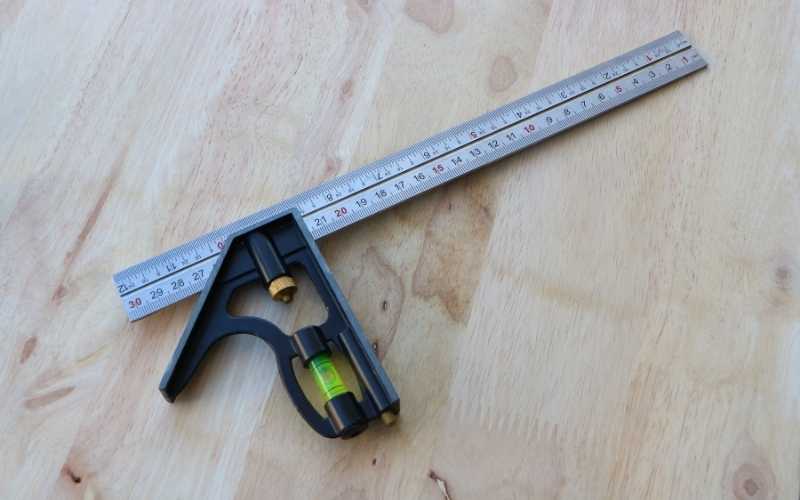
Just like the speed square, the combination square is a multipurpose tool for making measurements and marking materials commonly used by woodworkers, metalworkers and even for stonemasonry work.
Unlike the speed square however, the combination square consists of a single rule to which one or more interchangeable heads can be attached.
You can use the rule as it is, as a straight edge for drawing straight lines, marking and making measurements, or you can pair it with different heads for even more functionality.
The most common and useful types of heads for the combination square include a standard head, a protractor head and the center finder head.
When paired with the heads, you can use the combination square for marking and referencing 90 degree angles, and checking for flatness of surfaces.
It can also be used for marking 45 degree angles such as when cutting mitres for making miter joints. You can also use it to check or mark lines parallel to an edge. When paired with the protractor head, you can use it to check, measure, mark and even transfer angles.
Spirit Level
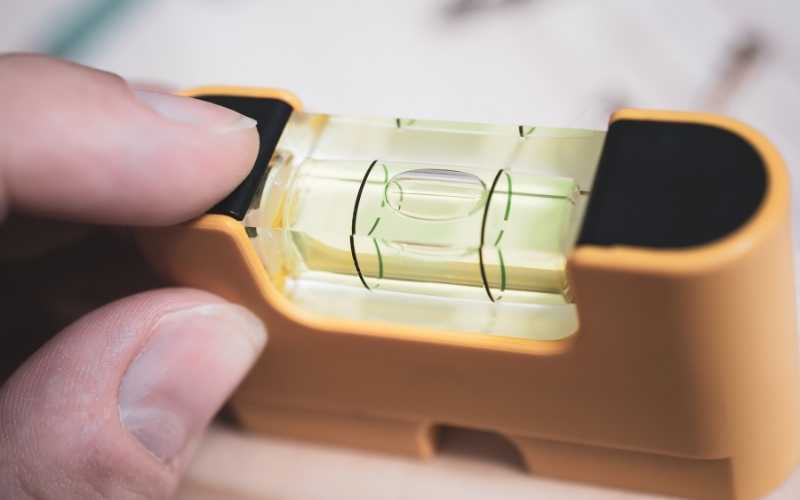
If you’ve ever watched bricklayers laying block, you’ll see they use a certain device to place the block so that the wall being built is straight and level all through. That device is known as a spirit level.
A spirit level, also known as plumb or bubble level is a measuring instrument you can use to indicate whether a surface or object is perfectly horizontal or vertical.
It’s a tool widely used in construction especially by bricklayers, carpenters, stonmasons, surveyors, and so on.
The spirit level consists of a cylindrical vial incompletely filled with a colored spirit or alcohol, so that a bubble remains in the fluid.
A slight inclination of the vial causes the bubble to move from the center position inside the vial. Meaning the surface is not flat. If the bubble remains in the center position when placed on a surface, then the surface is flat.
Laser Level
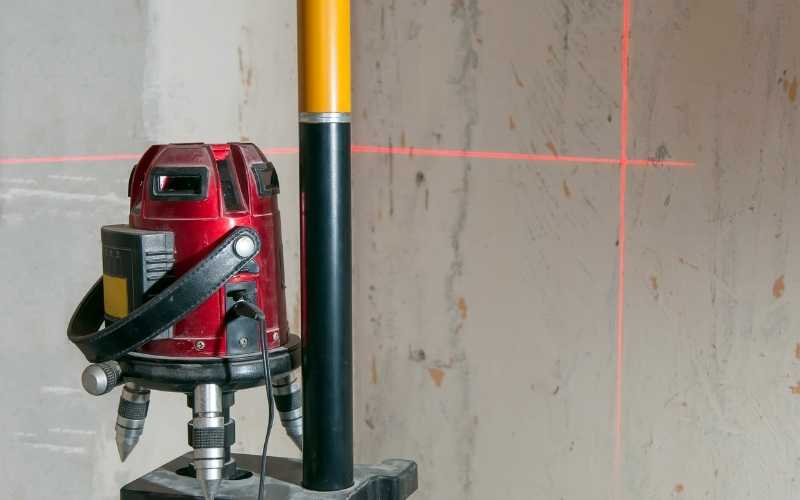
The laser level is a very important measuring tool you can use for installing things just at the right position, especially indoors and even outdoors.
It is usually fixed to a tripod, and it projects a straight light beam that can be used as a guideline or as a straight and level reference point.
Laser levels usually project straight light beams of different sizes, but the thinner or smaller the beam of light is, the more precise the laser is.
The first laser levels produced where limited to indoor use because the light beam produced where not strong enough to be detected outdoors.
Due to advancement in technology however, present day laser levels are even more powerful, making it possible to use them both indoors and outdoors.
They’re usually used for applications where a straight guideline is needed over a large distance, like installing chair rails, wainscoting, kitchen cabinets, closet shelving, doors, windows and even wallpapers.
It can also be used for aligning and plumbing walls, leveling floors and installing drop ceilings.
Major outdoor applications include land surveying, aligning of fences, posts and decks, farming and drainage application, and so on.
Laser Distance Measure
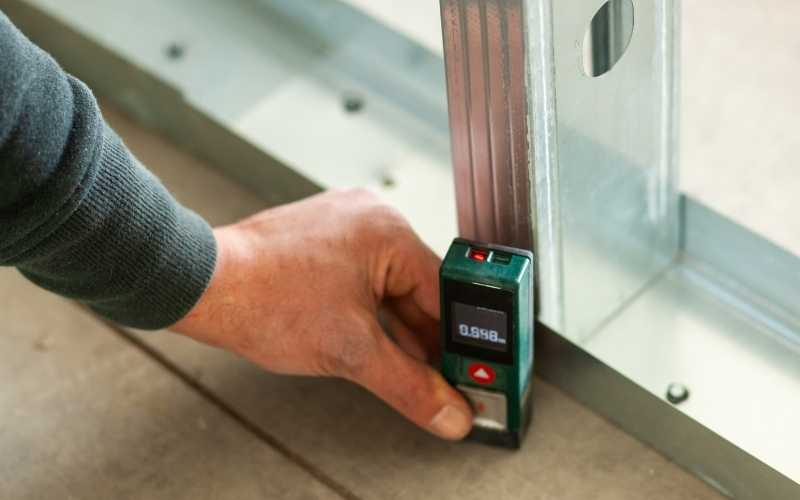
Want to measure the distance between two fixed points as precise as possible? Then you might need to ditch the tape measure and get a laser distance measure instead.
The laser distance measure also called a laser tape measure is an electronic alternative to the traditional tape measure.
Instead of pulling a tape and walking over to the other point you want to measure, just point your laser distance measure to the target, and it will display the distance between the two points on the screen. It’s as simple as that. You can use it to measure both vertical and horizontal distances.
Engineer’s or Architect’s Scale
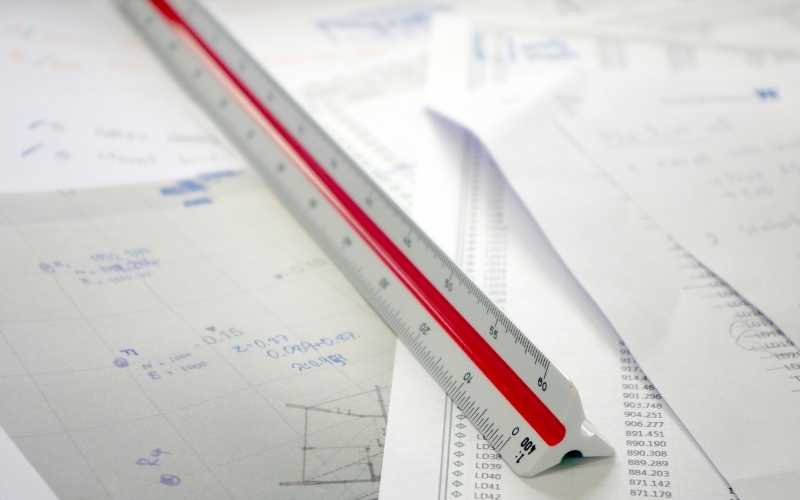
An engineer’s or architect scale is a special type of ruler used by engineers and architects for drafting and measuring architectural/engineering drawings like blueprints or house plans, and also transferring measurements.
It’s commonly made of materials that are dimensionally stable and durable such as plastic, brass and aluminum, so it can stay accurate throughout its use.
The shape of the ruler may be flat with 4 scales, or it can have an asymmetric 3-lobed cross section with 6 or 12 scales, with these being the most common ones you’ll find among architects and engineers.
Chalk Box or Chalk Line

If you want to draw or mark a very long straight line on a flat surface either vertically or horizontally, longer than is possible by hand or with a straightedge, then what you need is a chalk box or chalk line.
It’s a very important tool used in carpentry, building construction, home renovation and other types of projects that requires you to mark really long straight line on a flat surface.
A chalk line usually consists of a string reeled in a case just like a tape measure. The case has an opening where you can add a loose dye (usually chalk) to the nylon string, so that when it’s laid across a surface and plucked, the string strikes the surface and transfers the dye or chalk to the surface marking a straight line on it.
Chalk lines are not only for marking flat surfaces. They can be used for marking irregular surfaces as well, as long as the line is pulled tight and the two ends are on the same plane.
Snapping the line then will always transfer the chalk to the surface, although you might have to snap it more than ones.

